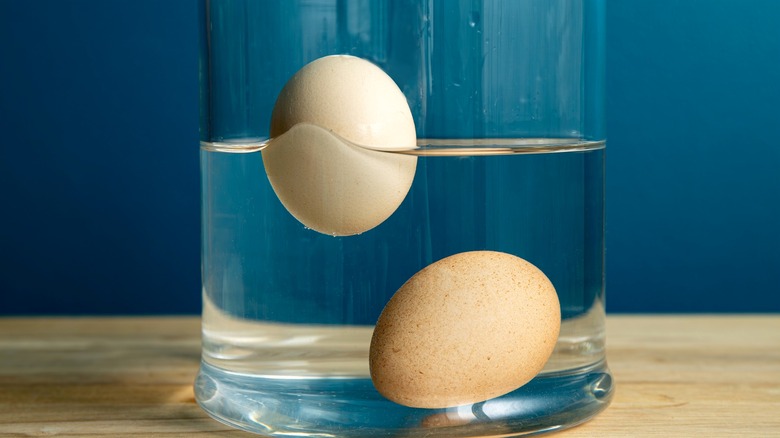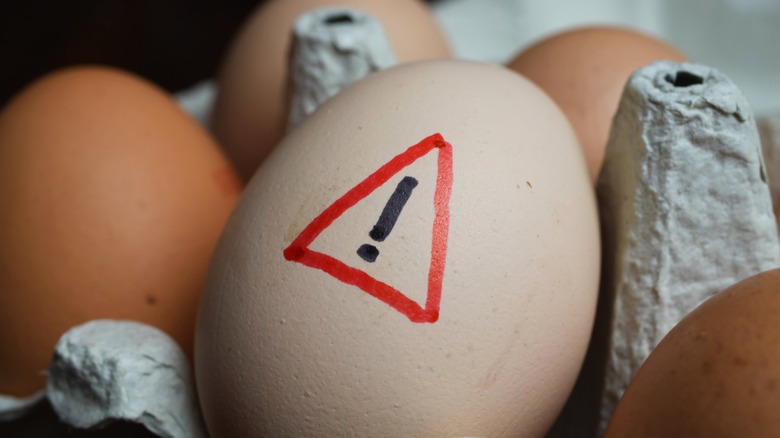Use The Float Test To See If Your Eggs Are Fresh
It is not often you run across a spoiled egg, as the USDA states that eggs can retain their quality for a month or more when stored properly in the fridge. But when you do find a bad egg, it's painfully obvious to your nose. The sulfur smell it emits can be overwhelming and sometimes so strong you can almost taste it. So, when you are setting out to make some delicious fried eggs with pesto or any other eggy dish, you want to be confident they aren't spoiled before you crack them open.
How to do that? Expiration dates don't always mean what you think and aren't a surefire way to conclude whether eggs are fresh or not. Thankfully, you can find out if your eggs have turned before ever cracking them open and letting loose that dreaded aroma. For that, you need nothing more than a bowl of water and your eyes.
When an egg is fresh, it will sink to the bottom of a bowl or glass of water and lay horizontally. While sitting in the refrigerator, they lose moisture, creating an air bubble inside the shell. As more moisture is lost over time, the air pocket grows. If the narrow end of the egg rises while at the bottom of the bowl of water, it is still usable but not as fresh as it once was. When it stands completely upright (but is still submerged), it is essentially on its last legs. If it is floating like a life preserver at the top of the bowl, it's best to throw it out. Other methods can also clue you into how long you have to use those eggs.
Other ways to tell if your eggs are fresh
Expiration dates give you a general idea of how long your eggs will be good for, but another label on the carton gives you a more accurate assessment of when they were collected. Look for a three-digit number on the carton. That is called the Julian date, which signifies precisely when the eggs were packaged and gives you a better idea of how old those grocery store eggs really are. For instance, the number 001 would mean they were loaded into the carton on January 1; the number 365 would mean they were packed on December 31 (assuming it's not a leap year).
Then, there is the candling test. Take an egg into a dark room and hold a flashlight (or a candle) up to the backside of the egg while it's facing you. If you see cracks in the shell, play it safe and discard it. That's because those cracks can allow bacteria to get inside the egg and accelerate spoilage.
If it has that signature sulfuric scent before it is cracked, it is definitely not safe to consume. However, there are several egg substitutes you probably already have in your kitchen, so your meal plans don't necessarily have to go up in smoke. As always, if you're unsure, don't risk it and toss the questionable eggs. Even as expensive as they have become, it isn't worth the risk of contracting a foodborne illness to try and use up eggs past their prime.

